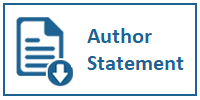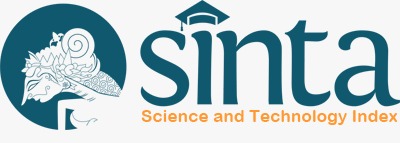Forecasting Motorcycle Sales Using Nearest Symmetric Trapezoidal Fuzzy Number
DOI:
https://doi.org/10.31937/ti.v8i2.515Abstract
A business activity aimed at obtaining forecasting as an initial step in planning activities helps provide an overview of sales in a business for the coming period based on data available. This research aims to design and develop a motorcycle sales forecasting application using Fuzzy Time Series with Nearest Symmetric Trapezoidal Fuzzy Number approach to predict the next period sales of PT Mutiara Motor. To test the accuracy of the method used in application, we used the MSE and MAPE criteria. Based on the results of three experiments taken: (1) monthly ‘All Category'-'All Type' with MSE = 54.42 and MAPE = 4.28%, (2) monthly ‘Beat CW Fuel Injection' with MSE = 3.67 and MAPE = 4.04%, and (3) daily ‘All Category'- 'All Type' with MSE = 1.42 and MAPE = 27.36% we indicate that Fuzzy Time Series with Nearest Symmetric Trapezoidal Fuzzy Number approach could give higher accuracy than the Single Exponential Smoothing method as comparison in forecasting motorcycle sales.
Index Terms”fuzzy time series, nearest symmetric trapezoidal fuzzy number, sales forecasting
Downloads
Downloads
Published
How to Cite
Issue
Section
License
Authors retain copyright and grant the journal right of first publication with the work simultaneously licensed under a Creative Commons Attribution-ShareAlike International License (CC-BY-SA 4.0) that allows others to share the work with an acknowledgement of the work's authorship and initial publication in this journal.
Authors are able to enter into separate, additional contractual arrangements for the non-exclusive distribution of the journal's published version of the work (e.g., post it to an institutional repository or publish it in a book), with an acknowledgement of its initial publication in this journal.
Copyright without Restrictions
The journal allows the author(s) to hold the copyright without restrictions and will retain publishing rights without restrictions.
The submitted papers are assumed to contain no proprietary material unprotected by patent or patent application; responsibility for technical content and for protection of proprietary material rests solely with the author(s) and their organizations and is not the responsibility of the ULTIMATICS or its Editorial Staff. The main (first/corresponding) author is responsible for ensuring that the article has been seen and approved by all the other authors. It is the responsibility of the author to obtain all necessary copyright release permissions for the use of any copyrighted materials in the manuscript prior to the submission.














